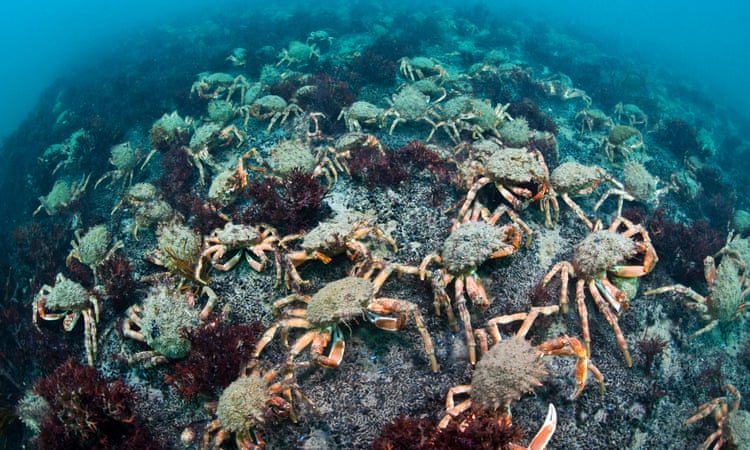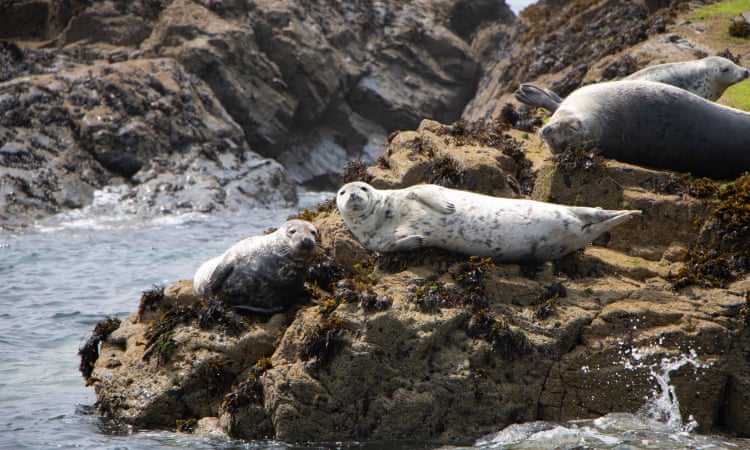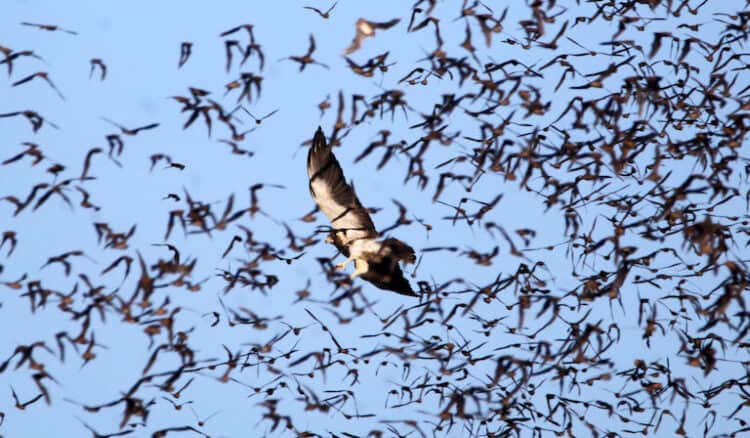Thousands of spider crabs have converged on the beaches of Cornwall due to rising sea temperatures caused by the climate crisis. The migratory creatures swarmed in the shallow water in St Ives, shedding their shells before returning to depths of up to 90 metres (300ft).
The crustaceans are instantly recognisable for their long legs and pincers, but they are harmless to humans. However, their presence at Porthgwidden beach was enough to put many bathers off entering the sea.
Kate Lowe, a marine photographer captured the event just days after a snorkeler was bitten by a blue shark during an excursion off Penzance.
Lowe said: “I go snorkelling most of the time throughout the year, but I have never seen spider crabs in such numbers. When we turned up at the beach, it looked as though there were lots of dark rocks under the surface.
“But it turned out that there were thousands of crabs just two or three steps into the water. It was just really incredible, they were only knee-deep. I was able to float on the water above them and tried not to step on them.
“A lot of the tourists were squealing at the sight of them. Their shells were just floating around.”
Experts say while it is not unusual to see them in British waters, mass gatherings are becoming more common in the summer because of the rising sea temperatures linked to the climate crisis.
These common spider crabs – Maja brachydactyla – usually gather in huge numbers in shallow water to protect themselves from predators while they wait for their new exoskeletons to thicken and toughen up.
This article by Nadeem Badshah was first published by The Guardian on 6 August 2022. Lead Image: Spider crabs in shallow water off Burton Bradstock, Dorset in August. Photograph: Nature Picture Library/Alamy.
What you can do
Support ‘Fighting for Wildlife’ by donating as little as $1 – It only takes a minute. Thank you.
Fighting for Wildlife supports approved wildlife conservation organizations, which spend at least 80 percent of the money they raise on actual fieldwork, rather than administration and fundraising. When making a donation you can designate for which type of initiative it should be used – wildlife, oceans, forests or climate.







Leave a Reply